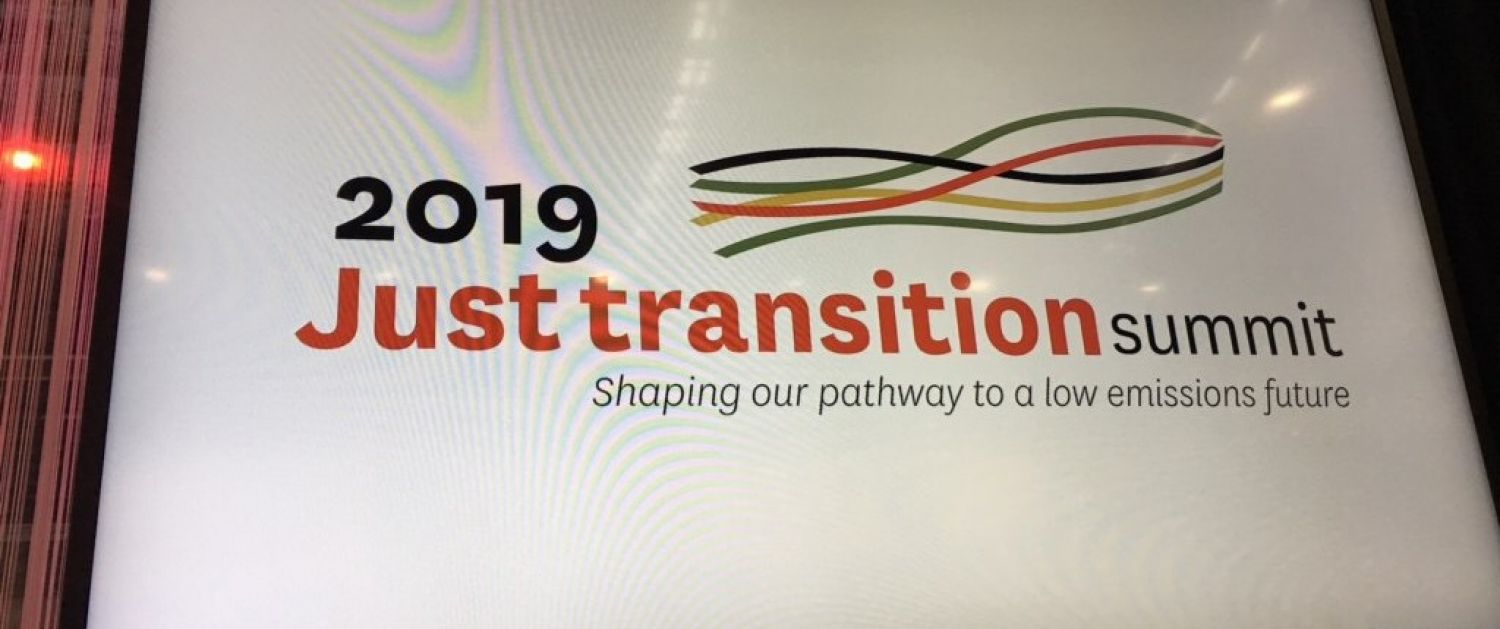Sign up for our monthly newsletter

Humanity-centred design can help tackle climate change
Humanity-centred design has a big contribution to make to Climate Action—but will leaders and change-makers act to harness the benefit of this approach?
Climate change is a global challenge in need of global solutions but action must also be driven at a local and national level. In New Zealand recently, we have seen a flurry of activity as our national government seeks to focus attention on how we might transition to a low carbon economy and society.
New Zealand’s Parliament has introduced the Zero Carbon Bill – Aotearoa will be one of few countries in the world to legislate a commitment to limiting climate change to an increase of 1.5 degrees. And leaders from across the country, including from ThinkPlace, have come together for a Just Transition Summit.
At that summit, Prime Minister Jacinda Ardern issued a rallying cry.
We need to completely remake our economy in the next 30 years, Ardern told those present. And we need to build consensus—we can’t just legislate change because legislation and political initiatives can be unraveled, and this change must be sustained.

Across the event, there was a sense of developing urgency. “We don’t need walls and isolation, we need cooperation,” said Hollywood director James Cameron, who has made New Zealand home and is working to future-proof New Zealand for the benefit for New Zealanders and for the world.
“How will we uphold Treaty of Waitangi principles and how will it look better than consultation? How will Māori values and indigenous values around the world play a role in transitioning to a clean economy?” These were important questions asked by Nikita Taiapa in the Rangatahi (Young People) Panel.
Meanwhile, Jennifer Natoli from E tū argued that we need a transition that doesn’t leave anyone behind, because the most vulnerable usually bear the brunt of economic changes.
These are complex, sometimes even competing, needs. And they highlight why climate change is a complex problem that cannot be swept away by a single elegant solution delivered by government (or by anybody else).
That’s why the kind of design we do at ThinkPlace -- human-centred design in complex systems -- is well-placed to contribute and to drive necessary action during this transition.
Why human-centred design?
First a clarification: Human-centred does not mean prioritizing the desires of humans over the needs of the planet.
Human-centred is actually human and planet centred. A Maori proverb says: Manaaki whenua, manaaki tangata, haere whakamua. (Care for the land, care for people, go forward)
In our understanding of human-centered design these ideas are inextricably linked.
Human-centred design stands on the belief that humans have the agency to change current systems to serve the planet and by extension, better serve humans, sustainably.
It is a ‘both-and’ proposition, the kind of win-win idea that a design stance cherishes and that design practice enables. Sometimes we refigure the name as ‘Humanity-centred design’, because care for the planet is an essential prerequisite for the physical, economic, spiritual and cultural wellness of humanity.
How might we tackle this challenge?
For a challenge as large and complex as climate change, taking action can be daunting. It need not be. There are three core aspects of human-centred design in complex systems that we can leverage to make the shift that is needed.
1) Radical collaboration for aligned system change.
Design not only accepts but seeks out diverse expertise and voices. It is in the stimulation and intersection of this that innovation is found. There are tried and true approaches to get people working together, not just to discuss issues, but to co-create co-solutions that span sectors, and turn problems into innovations.
A core part of this radical collaboration is the use of visualization tools that enable different groups or people to share an understanding of the current state. Even more importantly, this approach can activate co-creation of the future state—our preferred future -- and the co-creation of a roadmap to get there.
Another critical aspect is the application of effective co-design to engage and benefit from the contribution of leaders, communities, individuals, experts, business owners, young people and more. A critical element of this is ensuring the experience of indigenous people is represented at the co-design table. As people who both hold wisdom and also experience unacceptable levels of deprivation in the current economic system, First Nations people everywhere, and Māori in a New Zealand context, have to be part of the change.
2) Zoom between system view and on-the ground view.
Complex problems require a system view (how do all these actors, objectives and forces intersect with and influence each other within a dynamic system)? but also a human view that takes into account the specific individual experience change that people can grasp and lean into.
To ensure we don’t leave anyone behind, we need to understand the implications of system interventions at a human level. But to create significant change for a problem that is global, we also need to scale up what works at ground level.
We also need to repeatedly zoom between tracking system change and assessing human impact in order to test whether interventions are having the right impact, or whether there are unintended consequences that compromise the initial vision.
3) Focus on action and change.
Design is about creating preferred futures. A design mindset revels in making something and, by doing so, making something happen. Climate Action is not only dependent on co-envisioning and co-creation; it requires co-implementation.
The design process drives change until the desired outcome is reached. It measures success by tracking the change that people can see, hold and feel. Design creates blueprints for change that provide the specificity to enable clarity, reduce fear and activate a collective ability to implement.
Climate action will ultimately be achieved through the creation and delivery of projects—specific and tangible plans that translate vision into reality. Design methodology is built for this task and perfectly suited to it. What’s more it leaves space and time for the critical job of building consensus and collaboration, key qualities that can guide successful implementation of good ideas and make the change real and lasting.
Take, for example, the hugely-successful A-Lab renewable energy innovation labs that ThinkPlace has created and run in Australia. A-Lab has generated hundreds of ideas and dozens of new collaborations, stimulating investment in innovative renewable energy projects. It does this by bringing the right people together, creating an environment that fosters innovation and collaboration and then introducing participants to design techniques that can turbo-charge the journey from ideation to creation and implementation.
With the political and social commitment so clearly on display in New Zealand the opportunities are limitless for what this kind of approach might achieve.
To meet the Climate Action challenge it is imperative that we summon all of the tools in our collective toolbox. This includes harnessing the expertise and power of human-centred design for complex systems to convene, co-envision, co-create, co-plan, co-implement and jointly share in success.
The challenge is for change-leaders to seek out approaches that are not business as usual—creative processes that enable bold thinking, inclusive processes bring diverse sectors of the population together, compassionate processes that work to inclusion and equity, and agile processes for effecting meaningful change at pace. We need science but we also need social technology that organises our relationships, values and work efforts towards the action needed to make the future we need to make.
We have no time to waste. Are you a leader with the ability to convene and activate meaningful coalitions for meaningful action? We want to hear from you!
INTERESTED IN OUR WORK AND IDEAS? JOIN OUR GLOBAL COMMUNITY








